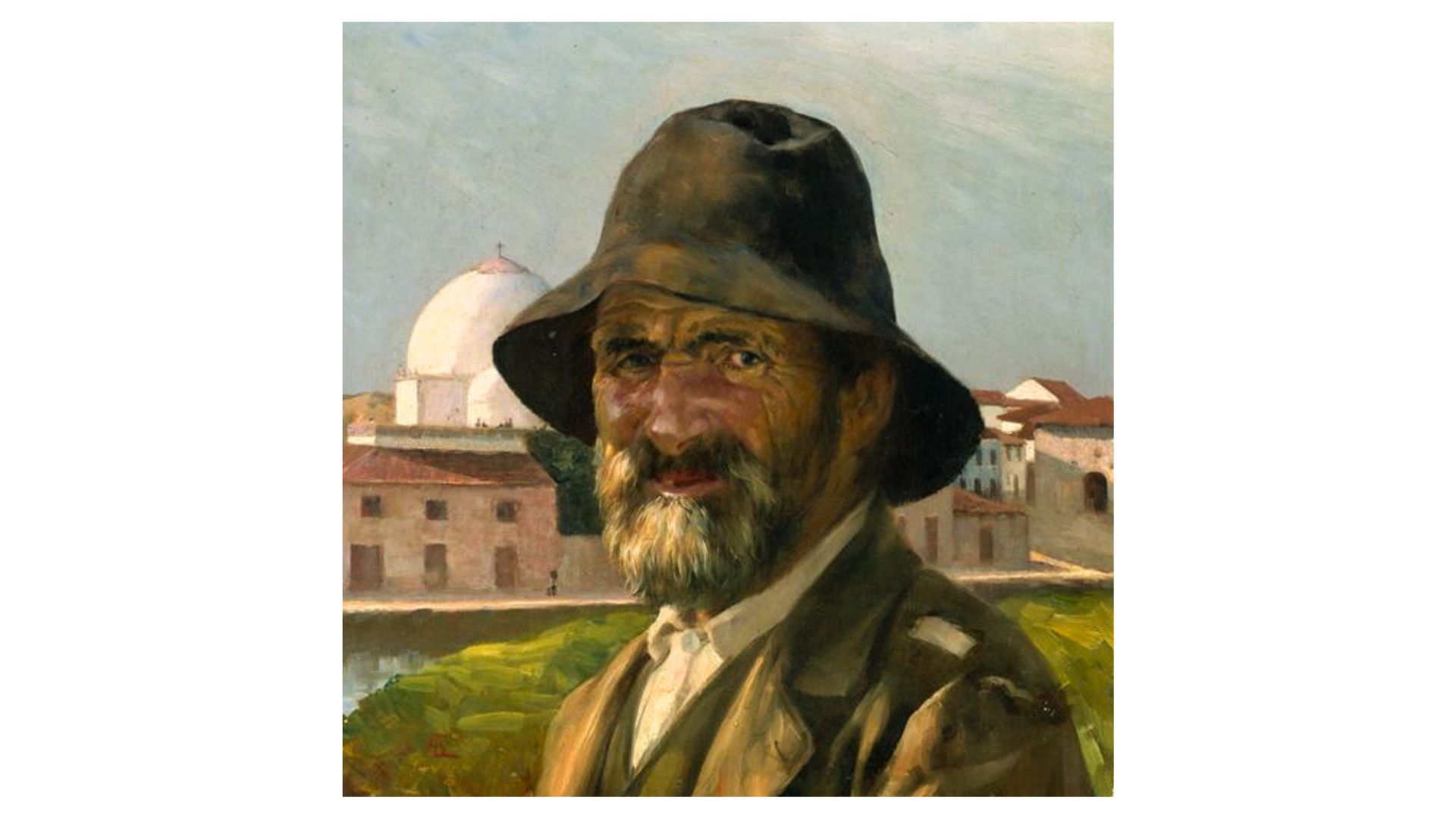Artur Loureiro was born in Porto, in 11 February 1853. He began studying drawing and painting with the master and friend António José da Costa, later joining the Academia Portuense de Belas Artes, where he continued his studies with João António Correia.
In 1873, he applied for a scholarship in Paris, which he would later give up in favour of Silva Porto. In 1875, he applied for the scholarship once more, this time in Rome, where he ended up joining the Círculo Artístico.
In 1879, the artist applied again for a scholarship in Paris, where he lived in Qartier Latin and attended the École des Beaux-Artes, where he was a student of Cabanel. Here he fell in love, becoming emotionally attached to an Australian woman, Marie Huybers, whom he married.
In 1884, physically weakened, he emigrated to Australia, settling in Melbourne. Only in the beginning of the 20th century did he permanently return to Porto, dedicating himself to the promotion of the arts. In his hometown, he set up a studio school in a wing of the now-vanished Palácio de Cristal, which became a space of reference, sought after by aspiring artists and admirers of the painter. There, he taught, painted, and exhibited.
He spent some time in Vila do Conde, where he produced several works. This fact is reinforced by the fact that, in 1933, the painting “Tio Francisco” (Uncle Francisco) was exhibited as part of the collection that, years later, was bequeathed to the Soares dos Reis National Museum and from which this figure of a man (Cabeça de velho – Old man’s head in the image) originates from. The background landscape of this painting places the representation in Vila do Conde, identified by the unmistakable presence of the dome of the Chapel of Nossa Senhora do Socorro, located in the riverside houses of that city.
In this regard, we recall the article by António de Lemos, in which he writes:
«Artur Loureiro, that great artist who for so many years lived away from us, in that beautiful country, Australia, and who once here, a son of Porto, loving his nest with a special artist’s love, after his first exposition where he showed us that he was a delicate figure painter, with his portraits and admirably executed types, goes very close to Porto, to Vila do Conde and full of desire and filled with savoir faire, launches beautiful paintings on canvas that are like filigrees of painterly art. (…)
Our painters have been sketching landscapes all over the country and none, as far as I remember, had been painting to Vila do Conde. Perhaps because they thought there was nothing to paint there, and Artur Loureiro, who had been away from his country for twenty years, arrived and to settle down from his schoolwork went to that beautiful beach to rest, and what a rest it was, he returned carrying in his luggage delightful canvases, extremely beautiful. To want to mention the best would be to mention them all, however, I will note as primarily – A Senhora da Guia – then, the Azenhas, and of these, I don’t know if one gleams in the sun or the other, and which one was made by a sad morning of rain.
The main church, I also mention for its beautiful effect. Like a resounding stain, in that softness of colour, the curtains of the church make the painting stand out (here is where I am certainly mistaken, in having had a beautiful impression from the red that stands out from the painting, but that’s just me and there is nothing that bothers me).
The general Landscape of Vila do Conde, with its convent and its white houses, is beautiful.
The Past, a picture full of poetry and candour. Loke a poem of love, of pain and misery, that old woman sitting at the church door, where perhaps she was baptised, married, and her companion of many years was buried, perhaps a fisherman, whom she now mourns, begging for alms, in her miserable and anguished widowhood.
But let’s close this article, which is already too long. Before that, however, we’ll note two paintings, one of which is titled – Não voltará mais (He will never return), which is another poem of pain. Next to a beautiful tree in bloom, a rhododendron, a widow and a child gaze at the sea.
That gigantic and barbaric sea that has surely forever subdued the loved one of these two figures, insinuatingly beautiful in their silhouettes». [1]
[1] In «Notas d’arte», António de Lemos, 1906

